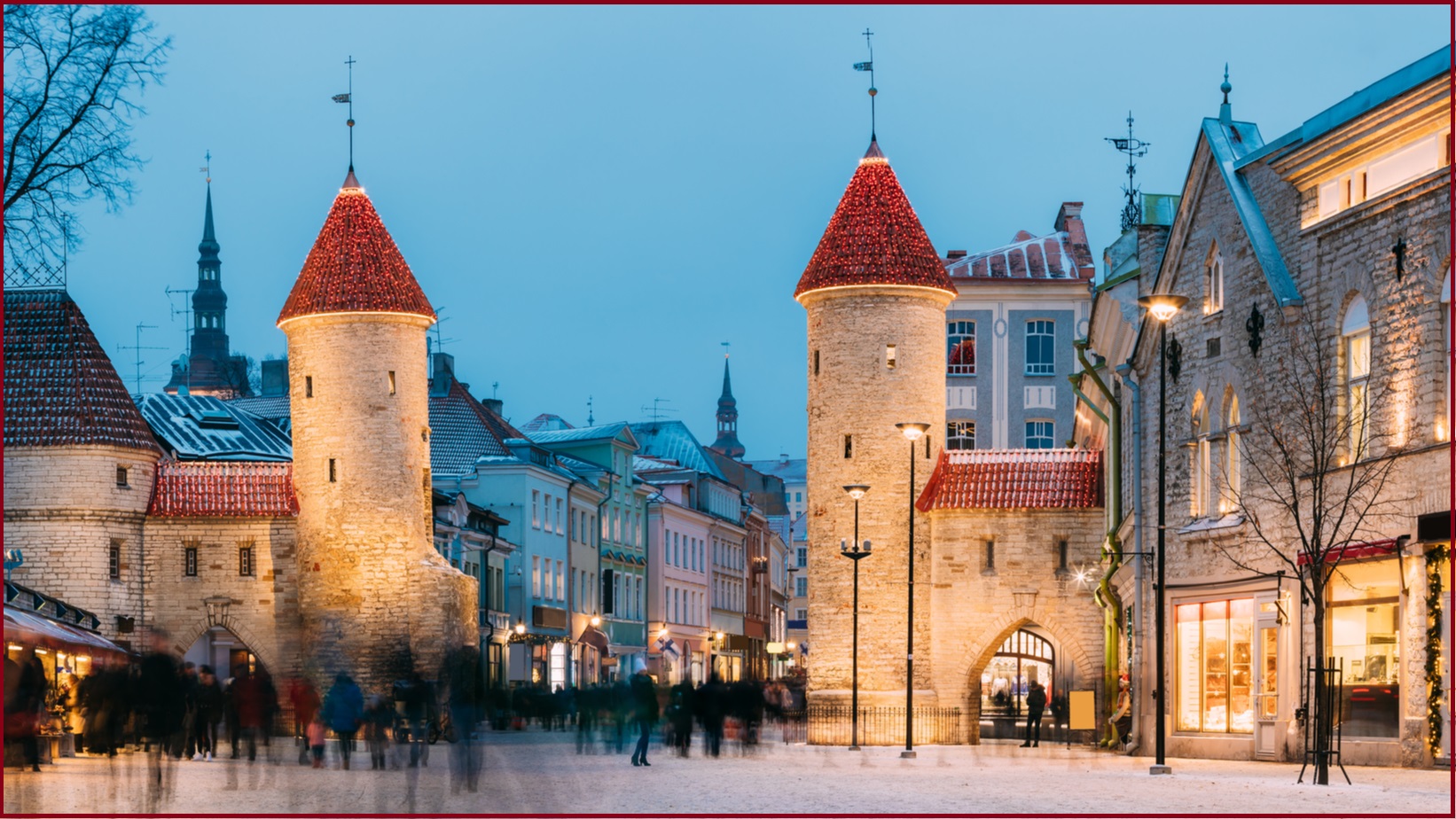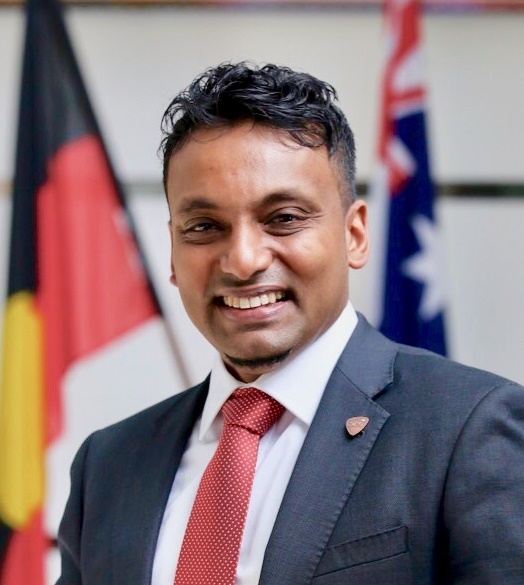Over 10,000 visitors have entered e-Estonia’s briefing centre to hear about this nation’s digital transformation. I am one of them. I also had the pleasure of escorting Susan Templeman, Labor Member for Macquarie, Ed Husic, Labor Member for Chifley and Trent Zimmerman, Liberal Member for North Sydney to this special place.
Estonia’s success sends a message to Australia – we must change and find and deliver on a smart vision for our nation.
Until 1991, Estonia was an impoverished Soviet bloc republic. Estonia is smaller than Tasmania, has a population size similar to Adelaide and fronts the cold Baltic Sea. Her natural resources include oil shale, sea and lake mud and construction sand and gravel. We are not talking about a land of plenty. When you look out from the parapet encircling the pretty preserved Old Town of Tallinn, the capital, you will see the Soviet era brutalist style concrete block towers still providing citizens utilitarian apartment living.
Despite these challenges, Estonia has ridden to modest prosperity. In a recent publication by Work+Money, Estonia ranked 42nd wealthiest country (Australia ranked 7th). The rank is based on three indices: GDP, average income and a Social Progress Index (SPI). The SPI is a long mix of water, sanitation, education, nutrition, healthcare, education, safety, media and political freedoms and other factors. Estonia ranked low on GDP and average income and well on SPI.
Underpinning the SPI was Estonia’s ambitious decision to build a smart nation-state. They realised their future economic prosperity lay in the digital world and knew their citizens had to embrace a digital society. Fast-forward and Estonia has become the most digital advanced society in the world. Its public sector is a model of on-line efficiency. They have even grander plans to make almost everything, prefixed by ‘e’. They want e-services done for their citizens automatically, securely and transparently through authenticated and trustworthy people and processes.
The creation of this digital state is impressive: 97% of schools were online 1997, cabinet meetings became paperless and e-tax came online 2000, most populated areas had free WiFi and digital ultra-secure ID cards commenced 2002, e-voting from 2007 and the nation was covered in ultra-high-speed fibre 2012.
Rapid digital transformation led to nearly 50% of citizens e-voting and 99% of services being available online. Your tax, for example, is completed by systems coordinating between your bank and the tax department. It takes citizens about five-minutes to verify and complete their e-tax return. In 2014 Estonia launched e-residency, allowing any validated person to obtain a transnational digital identity. This ID allows you full access to Estonia’s pubic e-services and a quick way to register and do business from anywhere at any time.
Florian Marcus, speaker-analyst at the briefing centre, has distilled three roadblocks why other nations have not achieved similar levels of digital services: countries with federal political structures; unresolved privacy issues; and (my wording) too rich to be bothered to do it. Australia has all three conditions.
I have been very vocal in writing and presentations that Australia must create a bipartisan vision of our future smart state and make clear plans to deliver. We must make our tech industry overtake coal and iron as our primary export earner. The NBN must be progressively steered towards its original state – fibre to the door. We must start building our equivalent of Israel’s Silicon Wadi (where 80% of their output is exported) and increase R&D expenditure. We should also look to adopt more of Estonia’s e-public services. With 98% of Australian businesses employing just 1-19 people, our efforts must help them grow.
However, it is unlikely that our current state will change. Three-year terms keep our politicians’ eyes on the next election and short-term populace policies. Australian politics lures lawyers, unionists, businessman and lobbyists and more males than females. This mix fosters adversarial behaviour at the expense of bipartisanship. A nurse, for example, has never been appointed as a Federal MP (despite nursing being a very popular profession).
It is most unlikely Australia will have an opportunity to vote for: five-year terms; or one less layer of government; or manifest updates to the Constitution; or a national ID card. Australia is a medium size freighter with the ballast of a large tanker. At a time of accelerating change, we are not agile – just indulgently cruising.
A lot of the ballast is property. It is where we have poured lots of our wealth. Our homes are some of the most expensive per capita in the world. The baby boomers continue to benefit from tax-funded, middle class, property-based welfare and will vote to protect their hard-earned wealth. No political party wants to be around if the property bubble bursts – better to top it up. The cost is the next generation is locked out, too much wealth is locked up in unproductive assets and our banks are locked into carrying lots of property debt.
The nation’s resource-generated wealth is a strange curse. It creates a level of comfort that parks ambitious nation-building reforms. In another article, addressed to Sri Lanka, I point out that South Korea, Finland, Sweden, Japan and Israel spend the most on R&D per capita. I also contend that their focus on innovation is for two reasons: they face real nation-state military threats and have limited resources. Australia faces no immediate military threats or economic peril and has abundant resources – there is no pressure on us to change course.
Meanwhile, the nation’s Innovation Efficiency Ratio (part of a United Nations and Cornell University annual measure based on 80 indicators) is below 0.6, which ranks us 76th and puts us on par with countries like Mali and Zambia. First-world peers generally scored above 0.8. Across all measures, Australia’s global innovation index ranks us outside the top 20 and only two positions higher than Estonia (24th). There are other critical global measures saying the same thing – Australia is sinking and becoming less-clever.
All the nations I have mentioned generally had fifteen-year executions, that is, sustained unswerving dedication to uplift major areas of focus (despite elections). Each nation’s plans and aims may differ; not the results. Estonia is now using its e-platform to build a model society connected at near light speed and attuned and responsive to a dynamic digital world.
Australia must accelerate into this digital world – it is our future. We must take this path or wake up one day to find demand for coal has dwindled and iron ore prices have dropped. As we crash out of the top ten wealthiest countries, house prices implode and the blood-letting subsides, only then may our nation demand bold far-sighted reforms.
I hope Susan, Ed and Trent’s visit to Estonia was a profoundly positive experience and a portend of a new guard of politicians willing to steer Australia cleverly into a prosperous digital future.










